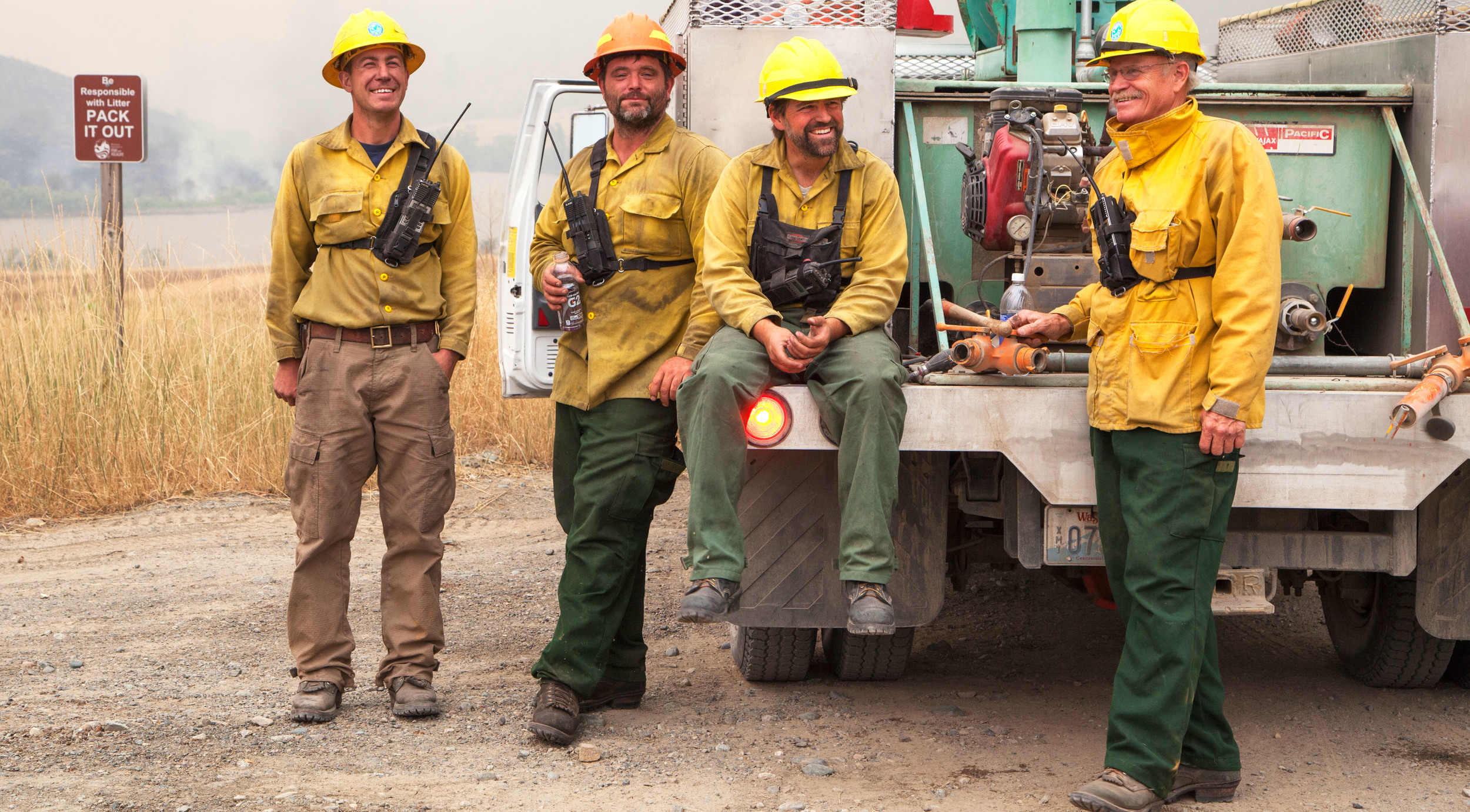Rediscover Prescribed Fire
Prescribed fire is the planned, professional application of fire in the right place, at the right time. It is a safe, effective process that has been sidelined for the last 100 years as we suppressed wildfire on a state and national level.
Fire suppression was intended to keep people safer and industry thriving, but over time, has actually resulted in the reverse: unprecedented forest density, stockpiled fuels, and diseased, degraded forests that are more likely to burn hot, fast and out of control. Recent wildfires have been especially devastating for Washington: lost lives, lost homes, shuttered businesses, millions and millions spent.
There has to be a better way, and there is. It's time to embrace prescribed fire.
Fire Adapted, Fire Dependent
Insulated by thick, grooved bark and able to shed lower branches to protect its crown, Ponderosa pine is a critical Washington species that is heavily fire adapted.
Black rings and dates show this pine survived surface fires every 8-15 years, prior to national fire suppression policies adopted in 1910 (notice the lack of black rings after 1908).
When we attempt to eradicate fire in our forests:
more trees compete for water and nutrients and overall forest health declines
vast areas of unnaturally dense forest are created with few breaks to halt the spread of wildfire
Protecting Public Safety
We all agree that our first priority is keeping our communities and firefighters safe.
Controlled fire helps to reduce stockpiled fuels, which allows wildfire to burn slower and cooler. At times, this means fires can be safely managed without direct intervention. When action is required, landscapes treated with prescribed fire are safer for firefighters to work in and have more defensible spaces to effectively fight the fire.
With a healthier forest, wildfire goes out naturally, or fire teams have more options for efficient containment. People, pets and livestock are safer. More homes and businesses remain standing; more watershed and sensitive habitat survives. That is fighting fire with fire.
Fire is complex, but it can work for us. We need more frequent, low-intensity fire, and the expert collaboration and sound science to decide when, where and how we burn.
Ecology
Forests, woodlands, prairies, grasslands, shrub-steppe - all these Washington ecosystems depend on fire to thrive. While each ecosystem has its own unique relationship to fire, generally speaking, controlled fire can be used to:
create a healthy mosaic of plants and trees that are more resistant and resilient to fire, insects and disease
promote plant growth, vigor and diversity
maintain vegetation patterns that provide cool, clear water for people and wildlife
Wildlife
Fire helps provide a diversity of habitats in ecosystems that are preferred by many species, leading to greater biodiversity.
Big game animals like deer and elk highly prefer shrubs and forbs that regrow after a fire, and mountain goats and bighorn sheep favor open browsing habitat to brushy, densely treed zones.
Increased open space and stimulated post-fire foods such as berries and seeds attract smaller animals and birds.
Clearing the Air
Clean air is important, and no one likes smoke. Even small amounts can be harmful to people with sensitive health, including infants, people over 65, and those with heart and lung disease.
But the reality is that we live in a fire-dependent landscape where smoke is inevitable.
We must encourage public awareness of controlled fire. It is effective, predictable and safer than wildfire. And prescribed burn teams actively work with air quality regulators to minimize smoke levels near populated areas.
Prescribed fire is essential for healthy forests and can help reduce (though not eliminate) heavy smoke exposure and other risks from wildfire. Prescribed fire is what Washington needs now — and our lawmakers agree.
Industry
Controlled burning is part of comprehensive land management strategies in a variety of industries, including:
improving aesthetics and access to outdoor recreation areas
preparing forestry sites after harvest and disposing of slash that can’t be diverted to other uses
cultivating long-term forage for livestock
reducing harmful insect populations and disease






